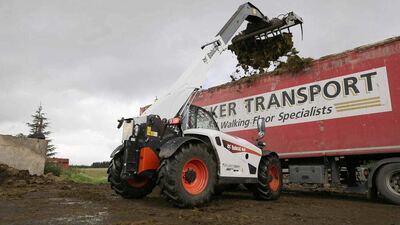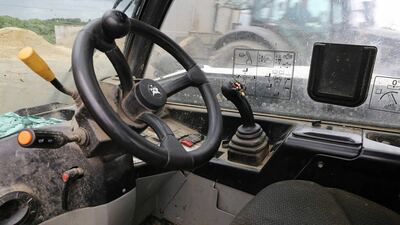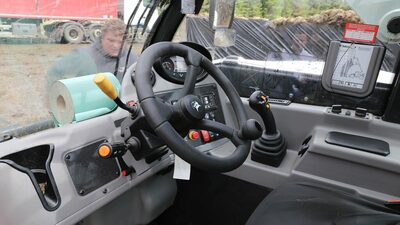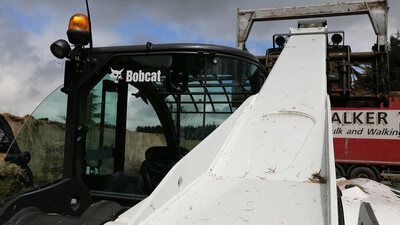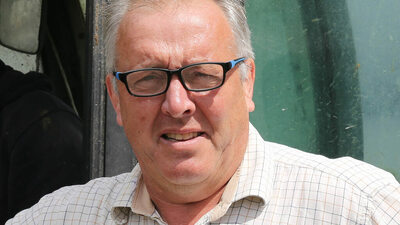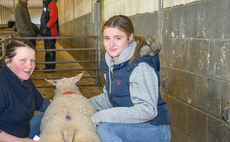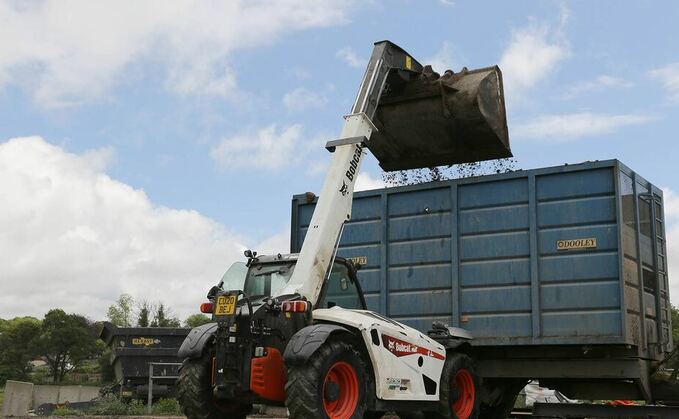
Having put over 6,000 hours on a pair of Bobcat telehandlers, one Carmarthenshire dairy farmer shares his views on the lesser spotted Bobcat telehandlers. Alex Heath reports.
For Howell Richards, reliability is a key consideration in his business. With 2,000 high yielding commercial Holstein cows to keep fed and clean, plus 1,400 head of beef being reared and the workload that goes with farming 1,416-hectares in south west Wales, there is no place for breakdowns, not least from the farm's brace of exceptionally busy telehandlers.
Based just outside of Carmarthen, the farm has an eclectic mix of modern machines of most colours, but one thing links them altogether. They all have high hours.
Mr Richards explains: "High hours goes with the territory of our farming enterprises. I am not particularly picky on the brand of machine we run, but in the first place, they need to be reliable and secondly have exceptional dealer back up in the event they do breakdown. We can ill afford an hour of down time, let alone days or weeks, hence the reason some brands are not present at all."
The current telehandler brand of choice for Mr Richards is Bobcat, supplied by local Case IH and Bobcat dealers A and M Group, based near St Clears, a stone throw from Carmarthen.
"We have had Case IH tractors from A and M Group for a number of years and the back up has been very good. When we looked to replace our old telehandlers, we spoke to them about their products. The Bobcat brand has a strong history of robust products with its skid steers and I had no doubt the back up would be good as well," he says.
The first Bobcat 30.60, capable of lifting three tonnes to six metres, arrived on the farm in February 2020 and was quickly joined by a second in April. Highlighting the hours put on the machine the first telehandler has recently departed the farm after clocking up 3,100 hours in 14 months, while the second is currently on 3,200hours and awaiting collection.
"The appeal of the Bobcats was the three year or 3,000 hour warranty. We did that in just over a year, but have had very few issues with either of them and any we did have were quickly sorted. We also took out a service plan with the dealer so that main services are done on time and at a reasonable cost.
"We have just taken delivery of a 34.65 which lifts 3.4t to 6.4m and are expecting the second to land in a couple of weeks. If the loaders were not reliable and good to work with, I would not have had another," adds Mr Richards.
"I was a bit over optimistic about what the 30.60s would do, so they have had a very hard year, but have coped remarkably well. The reason for opting for the smaller models is that we have a few sheds that are a bit tight and the larger machines would not have fitted in, however, we are re-doing these sheds and can now afford a larger frame, which will reduce the stress put on the loaders."
With such a busy farm, Mr Richards says it is not uncommon for more than 10 different drivers to be using the machines each week, all with their own different driving styles. As a result, Mr Richards needs a machine that everyone can get on a drive.
"Controls in the 30.60s are simple and they are easy to drive. That is critical. The hydrostatic transmission means there is no gears to select, it is just press the throttle and set off. And the automatic park brake that comes on when the loader stops is another handy feature that eliminates the chance of the loader rolling while the operator is off the seat.
"They are also very capable and do most of the work we need them to do. The lift capacity is not the biggest, so we have put a smaller bucket on them for safety, but that is not a fault of the machine.
"The visibility over the bonnet is not the greatest on them either, however, this has been dramatically increased on the 34.65 which has a different cab. Not only does the cab have more glass and less steel in the way, like the window over your right shoulder, which is curved, the bonnet sits lower and the cab sits higher giving better views all round."
Mr Richards and his drivers describe the 34.65 as a different animal. Whereas the 30.60 machines made do with 100hp generated from the manufacturer's own 3.4-litre engine, the new loaders have 135hp from the same unit. This has transformed their performance, he says.
Although the loaders have a hard life, being run for many hours each day and caked in slurry, they are well looked after mechanically Mr Richards says. Every other day, they are greased and given a good checking over which inevitably helps with the reliability and resale value.
He says: "When it came to change the loaders, we had to pay £30,000 towards a new one, costing about £10 per clock hour, which is good value considering the work they do. When one is not on the farm, we miss them, they are that handy and important to us.
"Generally, this is when they have gone for a load of straw or taken fertiliser to a field. The 30.60s are good on the road and tow well, but we expect even more performance from the new loaders. Diesel usage in the yard and on the road has been good, as has AdBlue. With the previous brand of machine, it would need filling up with AdBlue every two days, whereas with the 30.60s, that is extended to six or seven days, another little thing that adds up over the hours."
While the telehandlers do not typically load the pair of Shelbourne feeder wagons, that is the responsibility of the industrial grade Cat 942H, they spend most of the time scrapping passage ways, pushing up feed, mucking out sheds, loading trailers and frequently sit on a hydraulically powered slurry stirrer. He commends the manoeuvrability and versatility the telehandlers offer. Mr Richards says the loading of the mixer wagons is the preserve of a loading shovel, but is open to the idea of a Bobcat version if one is launched in the future.
A and M group supply the telehandlers with the manufacturer's three-star specification package, with includes boom suspension, suspended air seat and plenty of automatic feature. The reason being, the secondhand value is stronger on the high spec machines than on a basic model.
With little having gone wrong on the machines, Mr Richards says there is little to not like about them, saying: "Because they have been so reliable and had very few issues, as bad as it sounds, I forget about them, as I have come to expect them to perform. The only thing I do not like when driving them is the headstock locking pin release is in an awkward position behind the joystick, but that is it.
"Overall, the reliability and back up has been very good, to such an extent I can see us running them for several years to come," concludes Mr Richards.
